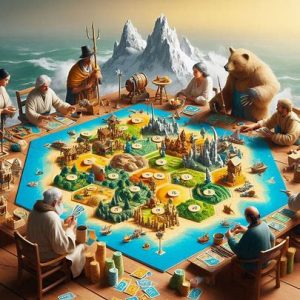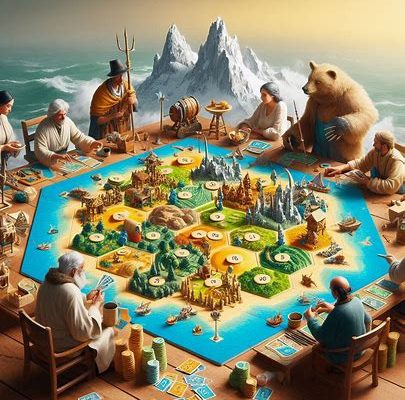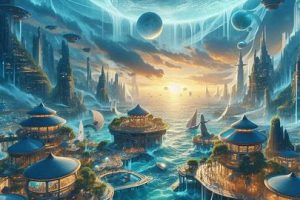Introduction to Catan
Catan is a strategy board game where players take on the role of classic-board-game-2025 edition-a-luxurious-take-on-a-classic-board settlers on the resource-rich island of Catan. The goal is to amass 10 victory points by building settlements, cities, and roads while trading resources like wood, brick, wheat, sheep, and ore. Known for its elegant design and interactive gameplay, Catan has sold over 40 million copies worldwide and earned accolades like the Spiel des Jahres. Its appeal lies in its balance of luck, strategy, and social interaction, making it accessible to beginners yet deep enough for seasoned players. This article delves into the game’s mechanics, its enduring popularity, and its relevance in 2025, including trends and practical applications.
Gameplay Mechanics: Building the Island of Catan
Catan’s gameplay is both intuitive and dynamic, offering a rich experience that unfolds differently each time. Here’s a breakdown of its core mechanics.
Setting Up the Board
The game begins with a modular board composed of hexagonal tiles representing different terrains (forests, fields, hills, pastures, and mountains), each producing a specific resource. Numbered tokens are placed on these tiles, determining resource yields based on dice rolls. This randomized setup ensures no two games are identical, encouraging adaptability. Players place two initial settlements and roads, strategically positioning themselves to access key resources.
Resource Management and Trading
Each turn, players roll two dice to determine which tiles produce resources. For example, if a “6” is rolled, all players with settlements adjacent to tiles marked “6” collect the corresponding resource. Resources are used to build roads (wood and brick), settlements (wood, brick, wheat, and sheep), or cities (wheat and ore). Trading is central to Catan, as players barter resources with each other or the bank (at a less favorable rate). For instance, a player might offer two sheep for one brick to secure a road-building advantage, fostering negotiation and diplomacy.
Victory Points and Strategy
Players earn victory points by building settlements (1 point each), cities (2 points each), and achieving milestones like the Longest Road or Largest Army (2 points each). Development cards, purchased with resources, offer bonuses like knights (to disrupt opponents) or extra points. The first player to reach 10 points wins. Strategic depth comes from balancing resource diversity, expansion, and opponent interaction. For example, placing a settlement near a scarce resource like ore can give a player leverage in trades but risks isolation if roads are blocked.

Why Catan Appeals to a General Audience
Catan’s universal appeal stems from its accessibility, replayability, and social dynamics, making it a favorite across generations.
Accessibility for Beginners
With straightforward rules, Catan is easy to learn, taking about 15 minutes to explain. Its family-friendly theme and lack of complex jargon welcome players as young as 10. Beginners can enjoy the game by focusing on building and trading, while strategic nuances emerge with experience.
Replayability and Depth
The randomized board and variable strategies ensure endless replayability. Intermediate players might prioritize controlling high-probability numbers (like 6 or 8) or monopolizing a resource, adding layers of complexity. The game’s balance of luck (dice rolls) and skill (trading and placement) keeps it engaging without feeling overly punishing.
Social Interaction
Unlike many strategy games, Catan thrives on player interaction. Trading fosters lively negotiations, alliances, and rivalries. For example, a player might refuse to trade wheat with a leading opponent, shifting the game’s dynamics. This social element makes Catan a perfect icebreaker for gatherings or team-building events.
Latest Trends in Catan for 2025
In 2025, Catan continues to evolve, reflecting broader trends in the board gaming industry and maintaining its relevance.
Digital and Hybrid Adaptations
The Catan Universe app, available on iOS, Android, and PC, brings the game to digital platforms with online multiplayer, AI opponents, and customizable boards. In 2025, updates include enhanced graphics and cross-platform play, aligning with the trend of hybrid gaming. Augmented reality (AR) versions, tested in recent years, allow players to project the board onto physical surfaces, blending tactile and digital experiences.
New Editions and Variants
The Catan 3D Edition, priced at around $300, remains a premium choice with sculpted terrain tiles, appealing to collectors and corporate settings. In 2025, a new Catan: Starfarers base game refresh introduces streamlined rules, reflecting a trend toward modernizing classic titles. Limited-edition collaborations, like themed boards inspired by popular franchises, also cater to pop culture fans.
Sustainability and Inclusivity
Catan Studio has embraced eco-friendly production, using recycled materials and sustainable packaging, aligning with 2025’s focus on environmental consciousness. Additionally, efforts to diversify artwork and themes promote inclusivity, broadening the game’s appeal to global audiences.
Real-World Applications of Catan
Beyond entertainment, C has practical applications in education, business, and social settings, showcasing its versatility.
Educational Tool
Catan is used in classrooms to teach economics, resource management, and negotiation. For example, middle school teachers use it to illustrate supply and demand, as students learn to value scarce resources like ore. The game’s randomized setup mirrors real-world unpredictability, fostering critical thinking. In 2025, educational variants like C Junior are popular for younger learners.
Corporate Team-Building
Companies leverage Catan for team-building exercises, as its trading and strategy elements mirror workplace dynamics. For instance, a marketing team might play C to practice negotiation or resource allocation, strengthening collaboration. The game’s competitive yet cooperative nature encourages communication, making it a staple in corporate retreats.
Social and Therapeutic Benefits
Catan fosters social bonds, making it a tool for community-building events or family gatherings. In therapeutic settings, it helps develop social skills for individuals with autism or anxiety, as trading encourages interaction in a structured environment. Its low-stakes fun creates a safe space for connection.
Challenges and Considerations
Despite its strengths, Catan has minor drawbacks. The reliance on dice rolls can frustrate players when luck overshadows strategy, though trading mitigates this. Games can run long (60-90 minutes), which may not suit quick sessions. For competitive players, the base game may feel light compared to heavier strategy titles like Terraforming Mars. However, these issues are minor given Catan’s broad appeal and ongoing updates.
Conclusion
C remains a timeless masterpiece in 2025, blending strategy, negotiation, and social interaction into a universally appealing package. Its intuitive mechanics make it accessible to beginners, while its depth and replayability captivate seasoned players. From digital adaptations to eco-friendly editions, C evolves with modern trends, ensuring its place in the gaming world. Beyond the table, its applications in education, business, and social settings highlight its far-reaching impact. Whether you’re building your first settlement or vying for the Longest Road, C offers an engaging journey that fosters connection and strategy. Gather your friends, roll the dice, and discover why C continues to shape the board gaming landscape 30 years after its debut.




